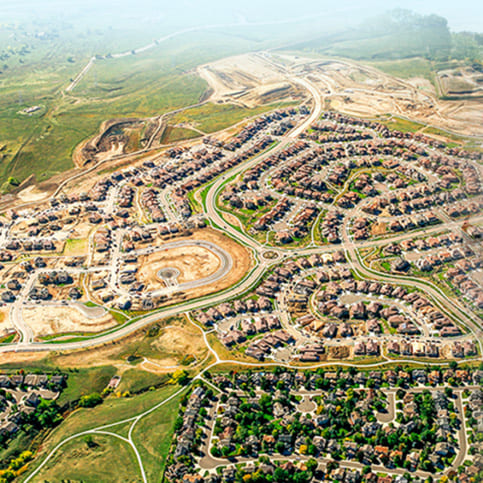Ware Malcomb hosted a webinar panel on the quickly evolving topic of site selection. Our panel dove deep into factors such as risk assessment, environmental obstacles, and ever-shifting client priorities. Joined by experts from Colliers, Terracon, and Graycor, our discussion aimed to outline priorities for selecting an optimal site and to help support cost-effective development measures.
Curated here, are key takeaways and site selection philosophy from our panel experts:
What aspect of the site selection process contains the most risk?
When it came to foreseeing risk, our panelists highlighted the need to look beyond the surface and soil conditions. Anthony Burnett, Senior Vice President, Site Selection, Colliers, noted the growing demand for existing capabilities. More than ever clients are seeking sites pre-equipped with services such as energy or water. As these resources become scarcer and clients seek out underdeveloped areas to start new projects, an early understanding of available resources and their capacities is very important for setting project timing and defining budgets. We also pointed out the need to consider the possibility of strained city resources and staffing. To overcome these factors, all agreed that a clear understanding of the jurisdictional timeframes and engagement of local officials is imperative to establishing a strong starting point for your client’s project.
How can the team instill confidence in the site selection process for the client?
Knowledge and a well-rounded team from the start are crucial for supporting your client throughout the site selection process. Will Salters, Principal, National Account Manager, Terracon stresses the importance of clear communication on all sides of the project to remain transparent with expectations. It can also be important to consider both the structure and diversity of the team. Also stacking the team with critical roles, such as a general contractor and a civil engineering team, can help a client identify issues early and avoid possible challenges in the future.
How is the industrial market affecting the site selection process?
With political tensions rising across the globe, the pressure is on to establish more manufacturing and energy production domestically. This has brought about new client obstacles, as many of these companies have never worked on U.S. soil. With major societal infrastructure differences, helping equip clients with knowledge of their potential sites can help establish trust in the process and potentially save on unexpected site or building costs. Panelists also say they are seeing a change in both the size and sheer quantity of projects coming down the pipeline. This increases the need to provide risk analysis and detailed background on a site upfront. This is especially true when it comes to more specialized or chemical related projects.
How is prop-tech playing a role?
Technology is quickly closing the knowledge gap with clients, and our panelists are utilizing both public and proprietary tools that provide the full picture and more. Salters highlights Stage1 by Terracon which combines years of historical data, public and private data sets, allows clients to view risk assessments and critical site information both confidentially and remotely. Burnett notes GIS-related tools such as Colliers 360 Technology services, to provide insight on factors beyond the build site. This includes data on workforce availability, tax rate, utilities, infrastructure costs, and operating risks to give a full view of operational costs.
Our civil engineers are constantly trying to innovate beyond the dirt on site. During the civil engineering design phase of a project various aspects of the site are analyzed to determine the best positioning for the structure, parking, detention, circulation, roadways and more. This analysis can include different technological tools such as InfraWorks and SITEOPS to help expedite the conceptual process.
Although progress is in motion, Brian Gallagher, Vice President, Corporate Development, Graycor, points out the construction industry can often feel stagnant when it comes to advancing technology and innovating the site selection process. However, he sees this as an opportunity to disrupt the market and push innovation forward.
As we look toward the future, our panelists say that innovation is at the forefront. Whether that means leveraging in house tools, or creating site incentives, clients are seeking more value and flexibility out of a site. With rising material costs and strained natural resources, Gallagher also points out the anticipation of clients doing more projects in phases.
As the site selection process continues to face new challenges as the industry evolves, one thing is clear – having an experienced, well-rounded team is the best way for our clients to optimize their site selection and maximize the long-term real estate value of their projects.
Check out more information on Ware Malcomb’s civil engineering land development services.



